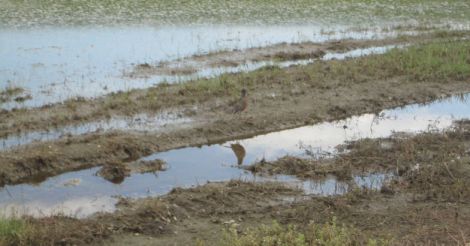Like South Asia, the South East Asia comprising Myanmar, Thailand, Cambodia, Vietnam, Laos PDR, Sultanate of Brunei, Singapore, the Philippines, Indonesia and Malaysia constitute one of the spectacular bio-diverse region of the globe.
The region houses three mega bio-diverse nations, including the Philippines, Indonesia and Malaysia. If we further expand this bio-geographical region with respect to biological, geological and geographical continuity with South China in the North, NE India in the North West and Papua and New Guinea in the South East, that includes three more mega bio-diverse nations taking the total count to six.
Also read: Call of the Wild: The challenges of environmental awareness in India
Therefore, the region can be easily defined as the most spectacular bio-diverse region of the world with numerous species of flora and fauna that cannot be found anywhere else in the world. Furthermore, if the adjoining maritime areas are included, the region represents few of the most magnificent global marine environments rich in diverse marine ecosystems and a wide spectrum of marine life in countless shades, sizes and shapes.
 One of the major reasons behind such ecological challenges is the underlying fact that the strong economic growth and benefits of the ASEAN (Association for South East Asian Nations) platform has not reached all the countries of the region equally. Photo: Saikat Kumar Basu
One of the major reasons behind such ecological challenges is the underlying fact that the strong economic growth and benefits of the ASEAN (Association for South East Asian Nations) platform has not reached all the countries of the region equally. Photo: Saikat Kumar BasuSouth East Asia is also rich in various ethnic communities spread across different countries, several cultures and socioeconomic groups, identified as one of the most populous, yet diverse ethnic region of the planet. The region is known for its wide diversity in the form of various species and sub species of monkeys, lesser apes (gibbons), great apes (orangutans), leopards, clouded leopards, Sunda clouded leopards, civets, bats, deer, boars, wild cattle, elephants, tigers, rhinoceros, tropical birds, insects, reptiles, amphibians, fishes and rich marine life. The diverse ecosystems of the region varies from inaccessible mountain forests and high altitude cloud forests and evergreen forests to tropical and sub-tropical rainforests, rich bamboo forests, spectacular riverine forest belts to rich coastal and mangrove forests.
Also check: Call of the Wild | The sublime extinction of trained taxonomists
In spite of the outstanding biodiversity, luxuriant forests, spectacular marine life, majestic wildlife, diverse ecosystems and climatic zones, rich terrestrial and marine biomes and enviable ethnic diversity, the region is also impacted with serious challenges of over population, exploitation, unplanned and unbalanced economic growth, serious ethnic conflicts, abject poverty in some areas, natural and anthropogenic disasters, environmental pollution, loss of forests and expansion of commercial agriculture into heavily forested areas impacting biodiversity.
 There are serious doubts regarding the existence of several species of bats, primates, rodents, leopards, rhinoceros, elephants and tigers in different parts of South China, Myanmar, Vietnam, Cambodia, Laos PDR and Indonesia. Photo: Saikat Kumar Basu
There are serious doubts regarding the existence of several species of bats, primates, rodents, leopards, rhinoceros, elephants and tigers in different parts of South China, Myanmar, Vietnam, Cambodia, Laos PDR and Indonesia. Photo: Saikat Kumar BasuSevere anthropogenic footprint and detrimental, negative pressures on the natural eco-environments in the region has led to failure in serious conservation efforts, forced extinction or near extinction of several endangered species in the region (like various species and sub species of local insects, birds, apes, monkeys, tigers, elephants, rhinoceros, bats and other fauna and flora), increasing human-wildlife clashes, illegal encroachments into protected areas as well as unrestricted poaching and trafficking of wildlife, growth of numerous black markets across Hong Kong, South China, Myanmar, Viet Nam, Laos PDR, Cambodia and Indonesia, for both live wildlife (such as small primates and other smaller mammals, colorful tropical birds, amphibians, reptiles and fishes as pet items) and wildlife products (like ivory, rhino horns, tiger and bear body parts, skins, fur, pelts, scales, bones, skeletons, horns, marine species and other trophy items) with over several millions US dollars in transaction per year.
 The diverse ecosystems of the region varies from inaccessible mountain forests and high altitude cloud forests and evergreen forests to tropical and sub-tropical rainforests, rich bamboo forests, spectacular riverine forest belts to rich coastal and mangrove forests. Photo: Saikat Kumar Basu
The diverse ecosystems of the region varies from inaccessible mountain forests and high altitude cloud forests and evergreen forests to tropical and sub-tropical rainforests, rich bamboo forests, spectacular riverine forest belts to rich coastal and mangrove forests. Photo: Saikat Kumar BasuAll these factors together with high demands for bush meat among impoverished local ethnic communities (parts of South China, Myanmar, Viet Nam, Cambodia, Laos, the Philippines and Indonesia), over exploitation of the forests in favor of commercial agriculture of oil palms and other cash crops (Myanmar, the Philippines, Indonesia and Malaysia), rapid infiltration of local communities into forested areas for daily sustenance (across entire South East Asia), increasing rate of urbanization (Brunei, Singapore, the Philippines, Indonesia and Malaysia), infrastructural development with no respect for nature (South China, Myanmar, Viet Nam, Cambodia, Laos, the Philippines and Indonesia) and high level of environmental pollution (across entire South East Asia) have been decimating the rich biodiversity, luxurious forests, fragile marine ecosystems and majestic wildlife of South East Asia.
The rise of marine traffic across South East Asian waters (both naval as well as commercial freights) across past three decades along with unprecedented tourism boom have also contributed towards the erosion of local biodiversity due to over exploitation of sensitive ecosystems in the region.
 The rise of marine traffic across South East Asian waters (both naval as well as commercial freights) across past three decades along with unprecedented tourism boom have also contributed towards the erosion of local biodiversity due to over exploitation of sensitive ecosystems in the region. Photo: Saikat Kumar Basu
The rise of marine traffic across South East Asian waters (both naval as well as commercial freights) across past three decades along with unprecedented tourism boom have also contributed towards the erosion of local biodiversity due to over exploitation of sensitive ecosystems in the region. Photo: Saikat Kumar BasuOne of the major reasons behind such ecological challenges is the underlying fact that the strong economic growth and benefits of the ASEAN (Association for South East Asian Nations) platform has not reached all the countries of the region equally. While Thailand, Brunei, Singapore and Malaysia have been the biggest beneficiaries, Vietnam, Indonesia and the Philippines are intermediate beneficiaries with Myanmar, Cambodia and Laos PDR being losers in the process. As a consequence, the economic growth varies in the region from one country to another and so does modern conservation efforts.
There are serious doubts regarding the existence of several species of bats, primates, rodents, leopards, rhinoceros, elephants and tigers in different parts of South China, Myanmar, Vietnam, Cambodia, Laos PDR and Indonesia. The last tiger census found less than five tigers in South China, Vietnam, Cambodia and Laos PDR, while no reports are currently available from Myanmar. It is estimated that wild tigers are most possibly extinct in most of these countries or restricted to populations of mere two to three!
The Javan and Sumatran rhinos, the Indo-Chinese, Sumatran and Malayan tigers, Borneo pygmy elephants; and several species of other rare flora and fauna are all facing very serious threats of virtual extinction across South East Asia.
Ethnic conflicts in parts of Myanmar, Vietnam, Cambodia, Laos PDR, the Philippines and Indonesia and the rise of militancy, insurgency and political instability have also contributed towards the loss of forests and wildlife in South Asia too. The porous and virtually under-monitored international borders and perennial refugee and migrant issues across South Asia is one of the important factor contributing towards the boom in illegal wildlife, drugs, arms and human trafficking across the region. However, the rise of the wildlife black markets across South China and South East Asia has been the single, largest global concern as they have impacted wildlife trafficking and poaching even across Africa, West and Central Asia, Eurasia, South Asia, Far East and in the Oceania.
 Severe anthropogenic footprint and detrimental, negative pressures on the natural eco-environments in the region has led to failure in serious conservation efforts. Photo: Saikat Kumar Basu
Severe anthropogenic footprint and detrimental, negative pressures on the natural eco-environments in the region has led to failure in serious conservation efforts. Photo: Saikat Kumar BasuUnless strong regional as well as international cooperation is established in South East Asia, the future of most species and overall biodiversity appears to be quite grim. Joint Conservation Initiative (JCI) among China, SAARC and ASEAN could play an important role in reducing cross border trafficking of wildlife and wildlife products, reduce poaching and conserve regional biodiversity better. Unless proactive steps are adopted for successful conservation of forests, wildlife and biodiversity by all the South East Asian nations together with equal participation, sincerity and dedication, very dark days are in the making for the natural environments and marine ecosystems across South East Asia.
(The author is a Canada and India based freelance journalist specializing in global geo-political, strategic and foreign policy issues, science & technology and environment & conservation related themes.)

























 South East Asia is rich in various ethnic communities spread across different countries, several cultures and socioeconomic groups, identified as one of the most populous, yet diverse ethnic region of the planet. Photo: Saikat Kumar Basu
South East Asia is rich in various ethnic communities spread across different countries, several cultures and socioeconomic groups, identified as one of the most populous, yet diverse ethnic region of the planet. Photo: Saikat Kumar Basu